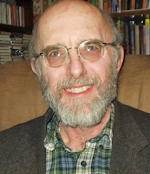Now that fiber-to-the-home (FTTH) and 40 Gbit/s systems are being commercially deployed (see www.laserfocusworld.com/articles/318567 and 318568 and 309265), it seems that the telecom industry is already looking ahead to terabit networks to feed what is finally real and tangible bandwidth demand. Evidence of the growing need for bandwidth was prolific at this year’s Optical Fiber Conference/National Fiber Optic Engineers Conference (OFC/NFOEC) Feb. 2428 in San Diego, CA.
In his Tuesday plenary session on “Managing Proliferating Traffic Growth,” Pieter Poll, CTO of Qwest Communications, said Qwest’s Internet traffic is doubling every 16 months, from levels of 9000 terabytes per day in 2007. As equipment suppliers anticipate moving from 10 Gbit/s to 40 Gbit/s networks, Poll said that his company is now considering a direct move from 10 Gbit/s to 100 Gbit/s networks and is hoping to see a 100 Gbit Ethernet (100 GE) standard by 2009.
The second plenary presentation “Toward Terabit Ethernet” from Bob Metcalfe, general partner of Polaris Ventures (who is credited with helping to invent Ethernet), called dense wavelength-division multiplexing (DWDM) a “silver bullet” that helped communications providers respond to rapidly growing bandwidth demand by simply multiplexing the capabilities of the legacy installed fiber network; however, he cautioned that the Internet isn’t done yet, and something more will be needed to bridge the next bandwidth gap. Metcalfe cautioned, “We’re not going to get to terabit Ethernet with the current infrastructure,” a strong hint that new materials, new sources, and new means of moving photons around will be necessary.
Still more phenomenal bandwidth demand was evidenced in Wednesday’s Panel III Market Watch, “Enterprise: Will the Next Speed Jump Bring a Boost for Optical.” Network Architect Donn Lee from Facebook presented a strong case as to “Why 100 G Pipes Aren’t Enough for Core-Rich Datacenters” when he explained that Facebook has 66 million active Internet users and is adding 1 million users per week. Lee said that his company needed 100 Gbit/s core switching last year to keep up with growing demand, and is filling the gap today by adding multiples of 10 GE networks connected by fiber in the core switching systems for Facebook.
Lee’s presentation was followed by Robert Schrage, head of network architecture and standards at Reuters, who also described the proliferation of Internet demand for its news and marketing services, noting that Reuters financial data is updated more than 8000 times per second. His presentation described the coming Terabit network and how new optical technologies will need to be developed to overcome the N × 100 GE bottleneck that is already being anticipated.
Technical conference
Although attendance was about the same as the last few years (approximately 12,000), OFC/NFOEC 2008 saw the highest level of technical paper contributions since the peak in 2003. Paper submissions increased 20% this year to 1155with 40% coming from the Pacific Rim, and more than 20% coming from Europe. This strong international presence was also reflected by the 600 exhibitors, roughly 40% of which were from outside the U.S.
As usual, the 35 accepted post-deadline papers (from 114 submissions), did not disappoint. Highlights included a record spectral efficiency of 4.2 bits/s/Hz from a group at AT&T Laboratories, and a record capacity-distance product of 41.8 petabits/s-kilometers from the French side of Alcatel Lucent. Corning (Corning, NY) reported on a new fiber that can be bent to a radius of 5 mm—an important improvement in FTTH systems where smaller-bend-radius fibers mean smaller boxes on the sides of houses, and higher tolerance for installers who tend to bend fibers too much. And of course, progress continues in the march toward monolithic integration of some impressively complex systems, including a 10-channel by 40 Gbit/s differential quadrature phase-shift-keying (DQPSK) transmitter from Infinera. Also, a few post-deadline papers hinted at the resurgence of coherent transmission for high-capacity systems. Dumped two decades ago when erbium amplifiers arrived, coherent transmission may be viable for practical use now that narrowband lasers are available and techniques exist for extracting the carrier signal at the receiver.
New products
Luna Innovations (Blacksburg, VA)—which purchased the assets of Iolon from Coherent—is now marketing its Phoenix 1000 MEMS-based, external cavity laser based on the former Iolon “Apollo” class of tunable laser. This laser can be used for applications in communications, fiber sensing, spectroscopy, and metrology, by providing fast tuning up to 500 Hz over the C-band wavelength from 1515 to 1565 nm with linewidth less than 2 MHz.
Finisar (Sunnyvale, CA) unveiled three new technologies at OFC/NFOEC: A 17 Gbit/s 850 nm VCSEL for the emerging 16G Fibre Channel standard; a 200 km 10 Gbit/s DWDM XFP transceiver module based on Finisar’s chirp-managed directly modulated laser (CML) technology; and a 40-km-reach transceiver module.
The single-photon-source operating on the show floor from Quantum Communications Victoria (Parkville, Australia) was noteworthy, considering that these usually have to be operated in dark rooms to avoid noise (see figure).
For DWDM spectral analysis, Lightwaves2020 (Milpitas, CA) announced a new optical channel monitor (OCM) based on its proprietary optical thin-film technology and innovative micro-optics.
And finally, newcomer Lightwire (Allentown, PA) introduced the first CMOS Multi-Source Agreement (MSA) standards-compliant 10 Gbit/s Ethernet (GE) SFP+ LRM (small-form-factor pluggable long-reach multimode) transceiver that integrates light-modulation circuitry into silicon—just one of the many integrated optical technologies that begin the drive towards terabit networks.


